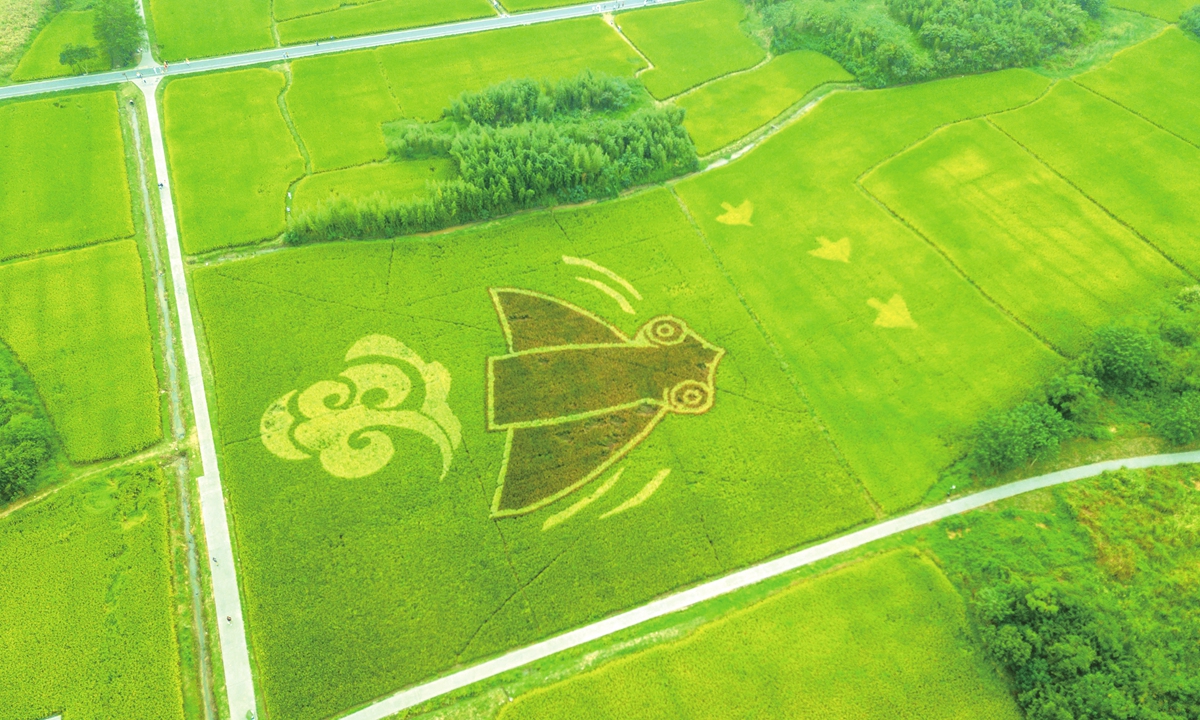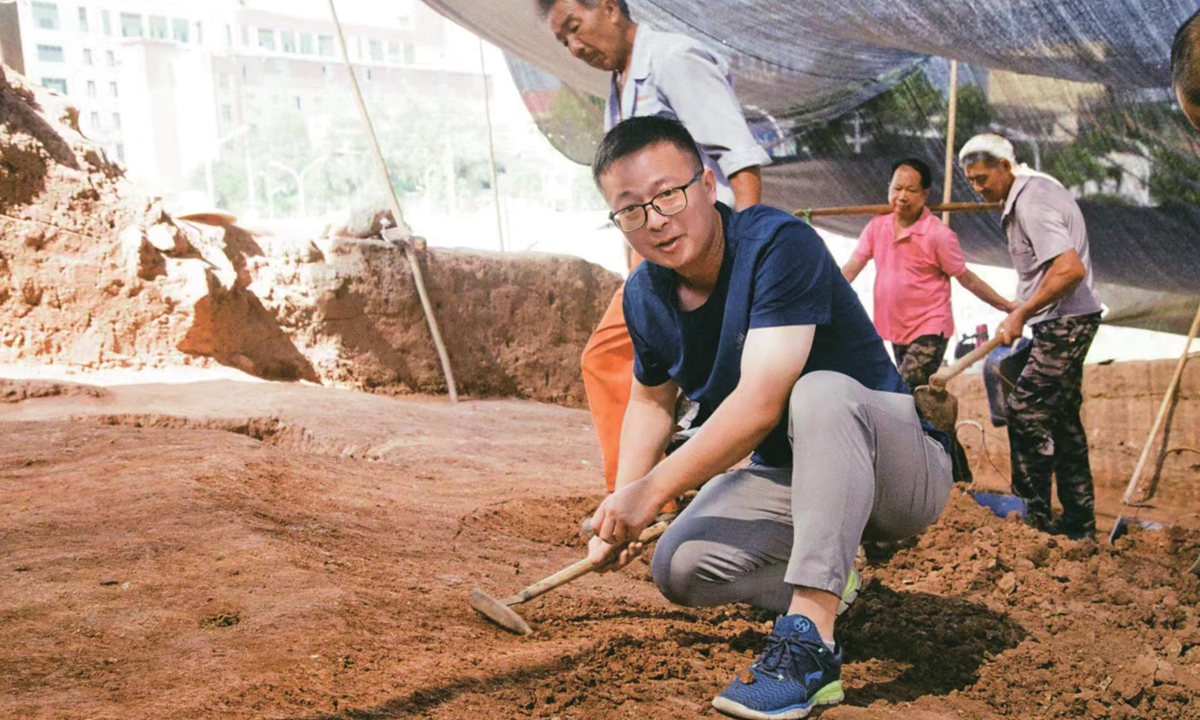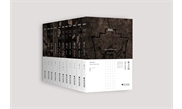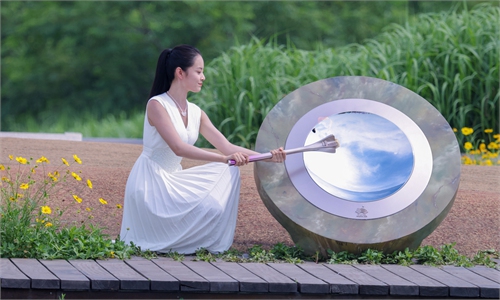ARTS / CULTURE & LEISURE
Young archaeologists dig deep to let world better understand Liangzhu civilization

Liangzhu National Archaeological Site Park Photo: VCG
The intense summer heat in Hangzhou, East China's Zhejiang Province, which can reach highs of 40 C, doesn't deter visitors waiting in front of the Liangzhu National Archaeological Site Park, hoping to visit the UNESCO-listed site and learn about the accomplishments of the urban civilization in the Yangtze River Basin.
For archaeologists working at the site like Chen Minghui, director of the Liangzhu Workstation at the Zhejiang Provincial Institute of Cultural Relics and Archeology, summer heat and winter's bitter cold are not a problem for them, but rain and snow are likely to temporarily delay their work process.
He has a tight schedule every day as he not only has to deal with research work in Liangzhu and Lishui, a city 200 kilometers away from Hangzhou, but also needs to help review English-version books about the Liangzhu civilization and related findings, which are to be released soon.
"If we want to inherit Chinese culture well, we must share our research results with the world, letting people from all over the world learn from and understand China's Liangzhu civilization," the 35-year-old archeologist told the Global Times.
Chen hopes to bring cultural relics to life from history and information gained from lab research, detailing all the exciting findings about Liangzhu-related research for people in
China and the rest of the world.

Chen Minghui works at the excavation field. Photo: Courtesy of Chen Minghui
Example of China's 5,000-year civilization
Located in the Yangtze River Basin, the archaeological ruins of Liangzhu dating back to 3,300-2,300 BC reveal an early state with a unified belief system based on rice cultivation in the Late Neolithic China, which offers profound and compelling evidence that the Chinese civilization started 5,000 years ago, 1,000 years earlier than previously estimated.
The site includes four areas - the Area of Yaoshan Site, the Area of High-dam at the Mouth of the Valley, the Area of Low-dam on the Plain, and the Area of City Site.
These ruins are an outstanding example of early urban civilization as demonstrated by the earthen monuments, urban planning, a water conservation system, and a social hierarchy characterized by differentiated burials in cemeteries.
Having worked at Liangzhu for 11 years, Chen has always believed that Liangzhu's 5,000-year history is unquestionable as it has all the necessary elements characterizing an ancient civilization from an original writing system and handicrafts, to articles used in rituals like a series of jade artifacts symbolizing a belief system, "which are also key factors that helped Liangzhu to be listed by UNESCO."
In 2019, the Archaeological Ruins of Liangzhu City was added onto the UNESCO World Heritage List as a cultural site by the World Heritage Committee.
The discovery of the Peripheral Water Conservancy System with complex functions and socially-graded cemeteries (including an altar), the earliest and largest of its kind around 5,000 years ago, has attracted attention from the world's top archaeologists including British archaeologist Colin Renfrew.
The jade artifacts, irrigation methods, and flood control through the construction of dams excavated at the Liangzhu site all showed that Liangzhu was "a highly organized society," thus resetting the clock on the start of the Chinese civilization to 1,000 years earlier than the widely recognized civilization of Shang Dynasty around 1,500 BC, said Renfrew, a retired professor of Archaeology at the University of Cambridge and fellow at the British Academy, in an interview with Xinhua.
Renfrew has visited Liangzhu twice since 2013 and was fascinated by the site. In 2018, he published a co-authored article titled "The emergence of complex society in China: The case of Liangzhu," calling for global attention on the significance of the Liangzhu site.
He also incorporated Liangzhu into the latest edition of his widely recognized textbook Archaeology: Theories, Methods, and Practice.
Urgent need for more English materials
Although overseas scholars like Renfrew know Liangzhu is "particularly important" to the study of the origins of human civilization, global archaeology circles continue to grapple with a lack of English materials related to Liangzhu's research.
"We feel the urgent need to let overseas scholars get to know Liangzhu civilization, as most of them couldn't visit the site from the very beginning. The first step is reading relevant English books and research results," said Chen, who has been collaborating with colleagues on four separate books.
That will be a good beginning of possible collaboration if they have a keen interest in visiting Liangzhu after reading the books.
"I have a strong sense of mission to help build Liangzhu into a world class archaeology base as Liangzhu, a representative of Chinese civilizations, contributes its experience to the world of archaeology."
Liangzhu showcases the great early Chinese civilization when compared to other ancient civilizations such as Mesopotamia, the Indus Valley, and the ancient Greek, Indian, and Mayan civilizations through hard work of Chen and his colleagues.
He has witnessed the continuous growth of the research team from a small team of seven individuals to a large group of over 30 professionals at present.
The Liangzhu Workstation has covered many areas including botanical, geological, and digital archaeology, pottery research, and other diverse fields.
Although they have made achievements from a macro perspective, Chen also emphasizes the importance of high technology archaeology on the micro level through more highly technological means introduced to help find the cultural background and wisdom behind these precious cultural relics.



